WORLD TRAVEL NEWS ARTICLE
ZAKYNTHOS, GREECE
Zakynthos, also known as Zante, is the southernmost and third largest of the Ionian Islands and the third largest of the group. It’s also one of the most popular Greek islands, well known for its quaint traditional mountain villages, olive groves, vineyards and some really spectacularly beautiful beaches.
Whether you fall prey to Zakynthos’ charms tends to depend on where you stay. If you head to Laganas you’ll be greeted with clubs, tavernas and bars – and quite possibly hordes of noisy tourists. But quieter resorts like Argassi, while still well equipped with restaurants and nightlife, have a more family-friendly feel to them.
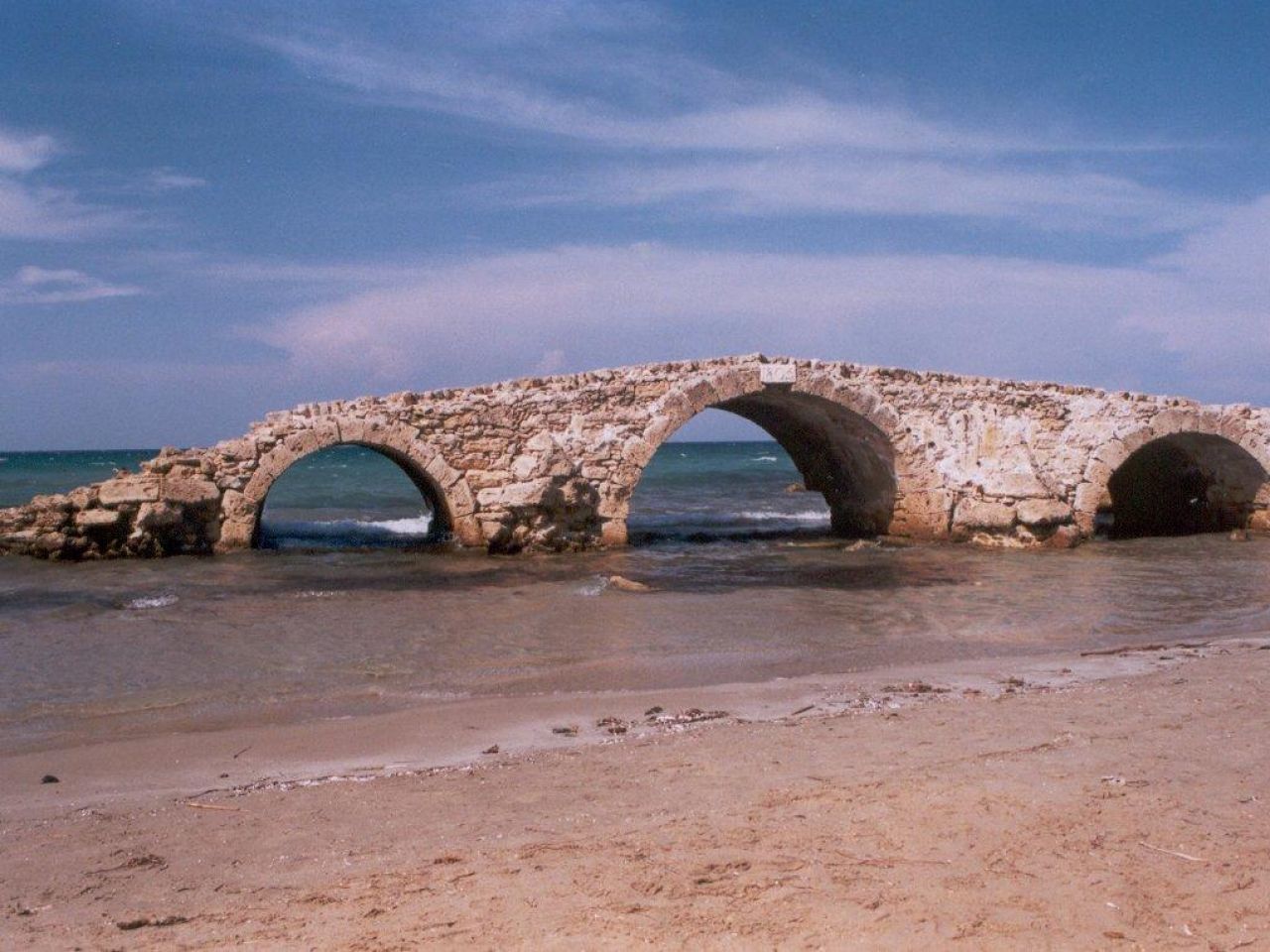
Zakynthos Tunnels
The island is famous for its grapes and wine, which probably accounts for the legends about the island being protected by Dionysus, the god of wine. Zakynthos is also known for being the island of songs, so you could well hear one of the local serenades, usually sung by groups of men in restaurants or at the local festivals, while you’re there. Music is close to the heart of Zakynthians – the first ever music school in Greece was founded in Zakynthos.
History
It’s thought that Zakynthos has been inhabited since the Neolithic period, some 3000 years BC. According to Homer, the first king of the island was called Zakynthos, and he was the son of Dardanos, king of Troy. The Zakynthians gained independence from Ithaca and for more than six centuries there was democracy on the island. During this period they even created a colony called Zakantha in Spain.
Hannibal’s invasion of Zakantha in 219 BC started the second Punic war with the Romans. The island was part of the Athenian alliance, and when the Alliance was defeated, the Spartans took over. The Romans came in the 2nd century BC and in later years the island became part of the Byzantine Empire.
Like many of the Greek islands, Zakynthos fell under Venetian rule but was never ruled by the Turks. Venetian rule lasted for 300 years, during which time the residents were divided into three categories, the aristocrats (the only people who had political rights), the middle classes and the ordinary people. Because of the harsh treatment of the ‘common people’ and the high taxes imposed by the Venetians there was a revolt in 1630. This failed and resulted in the ordinary people being even more oppressed.
Napoleon’s army conquered the island in 1797 and Zakynthos gained some freedom – which was swiftly followed by two years of Turkish–Russian administration. In 1800 Zakynthos became the first independent state of Greece in the Ionian Islands. In 1807 the French occupied the island and from 1809 until 1864 the British ruled when Zakynthos became united with Greece.
The Ionian Islands are situated upon one of Europe's most notorious faults, and they are all prone to earthquakes. Zakynthos was rocked by massive earthquakes in 1953 which resulted in the total destruction of the island's infrastructure, and was felt throughout most of the country. Only three buildings on Zakynthos were left standing after the quake – the St. Dionysios Cathedral, the National Bank building and the church of St. Nicholas. A few other buildings in outlying areas managed to avoid complete collapse.
The rebuilding of the island was subject to a very rigid anti-seismic code, and the new buildings have withstood several moderate and powerful earthquakes with only a small amount of damage.
Getting There
By Air: Zakynthos has its own airport with daily flights to and from Athens and regular flights from Corfu, Kefalonia and Thessaloniki. During the summer months there are also plenty of charter flights to the island from Europe.
By boat: The island is connected with Patras and Kilini on the mainland, and there are ships from Zakynthos to Kefalonia.
Food
The food on Zakynthos varies depending on your choice of eatery – from tourist ‘fast food’ to traditional Greek cuisine. There are plenty of places where you can get the ubiquitous full English breakfast, fish and chips and sausages if that’s your thing, but it’s worth checking out some of the lovely traditional restaurants and tavernas for the local dishes.
One delicacy worth trying is skordostoumpi, a dish made with aubergines and garlic, or the meat dish, sartsa. Locally produced cheeses such as Mytzithra and Ladotyri are also worth trying.
Zakynthos also has some very good locally made wines.
Money
The Greek currency is the Euro. For the latest exchange rates visit www.xe.com You can exchange all foreign currencies at banks on the island, or bureaux de change, but keep an eye on the exchange rate as they tend to fluctuate from one bank to another. All major credit cards are widely accepted, as are traveller’s cheques in most currencies.
Greek banks charge a flat commission rate for cashing traveller’s cheques, and you can avoid extra fees by taking them in Euros, Pounds Sterling or US Dollars.
Banks are generally open from 8:00am to 2:30pm Mondays to Thursdays, and close at 2:00pm on Fridays
Shopping
The best shops are in Zakynthos Town, where there are plenty of decent upmarket shops as well as places to get souvenirs, clothes and icons. Treat yourself to some of the local cheeses and wines as well as the local sweets like the Mandolato (almond sweet) and Pastelia (made from honey and sesame.)
The shopping hub of Zakynthos Town is in Alexander Street, close to the waterfront. Zakynthos is home to all sorts of luxury shops with designer labels and jewellery, antiques and good quality leather goods, so it’s not just touristy items you can pick up in the town Most shops are open Monday, Wednesday and Saturday until 3pm, and until 8pm on Tuesday and Thursday although the tourist shops are open late seven days a week.
Souvenirs to look out for are folk art and crafts that you can find in shops all over the island. The better souvenir shops sell some good examples of hand-woven textiles and embroideries with intricate designs, olive woodcarvings, silverware and jewellery
Nightlife
If it’s a rowdy nightlife you’re hoping for, book yourself on a cheap package and join the 18–30 crowd in Laganas. If not, avoid it and head somewhere else. Laganas can be crowded and gets very busy during the high season, with people spilling out of the bars, cafes and English themed pubs until the early hours. Argassi is quieter, but still has quite a few bars and clubs to choose from, so it’s a good compromise if you still want to have a good night out but don’t want to get caught up in the rowdy all-nighters. In Zakynthos town there are a few bars to chill out in, but it’s quieter still.
The island has a long musical tradition. It was Zakynthos that first introduced opera and operetta to Greece and in 1815 the first Music School in Greece was opened on the island. The official band of Zakynthos even played in the first Olympic Games in Athens in 1896. Zakynthos introduced its own jazz festival (the Zante Jazz Festival) in 2009. Clubbing is a major part of the island’s culture, especially in the larger resorts such as Laganas.
Getting Around
The island has a very good road network, and there are plenty of local buses that will take you almost anywhere on the island, with taxis, car and bike hire all easily available. There are plenty of boat rips out to the beaches, too.
Where to Go
Zakynthos Town
The capital and main harbour of Zakynthos is Zakynthos Town on the eastern part of the island. Once blessed with some stunning examples of Venetian architecture, the earthquake of 1953 destroyed most of the elegant mansions and neo-classical buildings, and today there are just a few traditional buildings and churches still standing. The new town was built on the ruins of the ancient one in an attempt to preserve the traditional architecture – but this has only really worked in a few areas of the town, like Solomos Square, due to the poverty that was caused by the ’quake.
The long waterfront that runs from Solomos Square to the Church of Agios Dionysios – patron saint of the island – can get very crowded, but there are plenty of decent restaurants, tourist shops and tour agencies there to cater for visitors.
Solomos Square is a large square surrounded by elegant buildings, named after the famous Greek poet Dionysios Solomos who wrote the Greek national anthem. A museum has been founded in honour of the poet’s life and work, and if you want to see it, head to the Agiou Markou Square.
There’s a Museum of post-Byzantine art on Solomos Square, which exhibits valuable icons, ecclesiastical clothing, frescoes from the 16–19th century and papers and photos of Zakynthos before the earthquake of 1953. A museum dedicated to the life and work of the Greek novelist and play writer Grigorios Xenopoulos is located close to the Church of Agios Dionysios.
The church of Agios Dionysios on the left of the waterfront is devoted to the patron saint of Zakynthos. His remains are kept there in a silver carved reliquary (a type of shrine used to house relics associated with saints or other religious figures – traditionally believed to have supernatural healing powers). The church also holds some beautiful wall paintings.
A Venetian fortress once rose over the capital but today you can only see the gate and the outer walls. The site is worth a visit anyway, just for the view over Zakynthos Town and the surrounding area.
Argassi
Argassi is one of the most popular tourist areas of Zakynthos, with a small beach, plenty of hotels, bars and restaurants, and a backdrop of the fantastic Mount Skopos. The resort has expanded a lot over the last few years, as is within walking distance of Zakynthos Town.

Boat on Argassi beach
Laganas
Laganas is on the South coast of Zakynthos and is without a doubt the largest and liveliest resort. It is part of a large sweeping bay of mainly flat land, with hills in the west that rise into the mountains that line the island’s west coast. The resort can boast some of the loveliest fine sandy beaches as well as the liveliest nightlife. There are some pretty areas to see, with fields, orchards and olive groves all around.
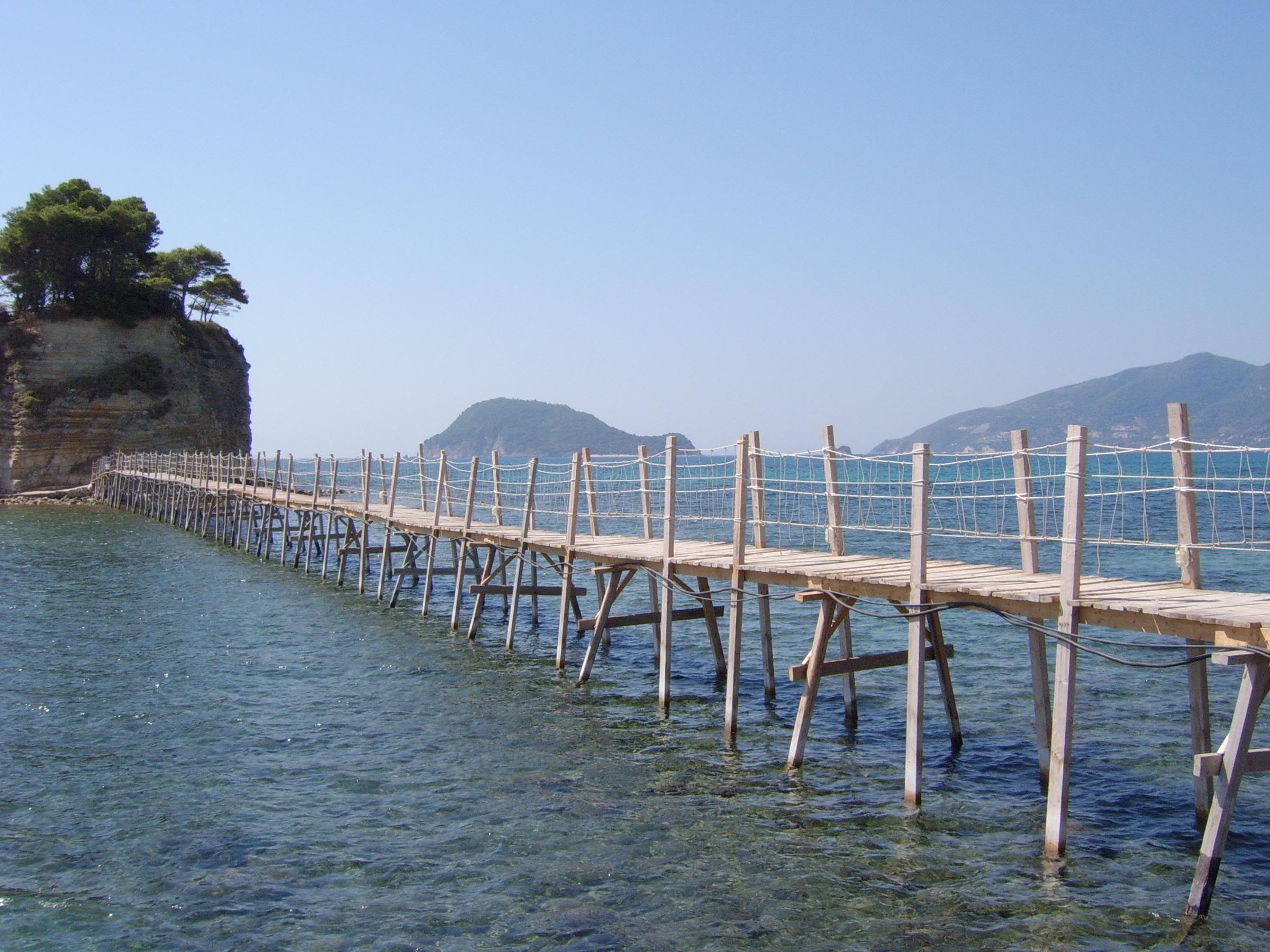
A pedestrian bridge at Laganas
Laganas Bay has a beach that extends for over 5 kilometres, and is widely thought of as one of the best on the island. It’s fairly narrow with gently shelving sand that descends into a crystal clear sea. The beaches are best for relaxing and not suitable for water sports because of the turtle conservation areas in some parts of the bay. Accommodation in Laganas is mainly self-catering apartments and small- to medium-sized hotels. Public transport runs regularly into nearby Zakynthos Town.
National Marine Park
The National Marine Park has been on the island since 1999 and is a conservation project designed to protect the Loggerhead turtle, or Caretta caretta. The Loggerhead turtle is threatened with extinction, so the marine park was created to allow the turtles to breed and nest here undisturbed. The park employs many volunteers to help protect the turtles and keep their habitat free from being disturbed or destroyed by tourists, and there are signs all over the most turtle-friendly beaches reminding you to be careful.
There are regular excursions out to some of the beaches where the turtles lay their eggs at night, and if you are lucky, you might even manage to catch a glimpse of the Monk Seal Monachus Monachus.
Smugglers Cove
Also known as Navagio, meaning Shipwreck, this cove features Zakynthos’ most famous sight and one that frequently appears in the travel brochures – featuring stunning white cliffs and clear turquoise waters. The cove is found on the north west of the island, and the beach is a must see.
In 1982 a ship, named Panagiotis was in the process of smuggling a large quantity of cigarettes when it was spotted by a customs patrol. It managed to outrun the patrol boat but was cornered on the north west coast in a terrible storm. The captain didn’t want to let customs win, and get their hands on his cargo but realised that he couldn’t save the hoard. He abandoned the ship, which was then carried onto the rocks and eventually washed ashore. Today, thousands of tourists from all around the world visit Smugglers Cove to admire this unusual spectacle.
The cove is accessible by boat trip from Cape Skinari or St Nikolas harbour.
Water Village
The Water Village is located in Sarakinado village, on the southeast part of the island. It’s a massive park that’s known all over the island for family fun days out. Coach trips are available from many travel agencies around the island.
The water-theme park is an ideal place for a day out; especially if you have children or teenagers. There are nine water slides, plus some adrenaline-rush inducing rides, and a large pool on one side of the park if you prefer less fuss and something more relaxing.
If you want to leave the rest of the family to the water, you can stay in the dry and play on the mini golf course. After a soaking, the kids can amuse themselves with mini cars, trampolines and a bouncy castle. Other attractions on the site include henna and tattoo shops and a gift shop. There are several cafes and bars serving snacks, and there’s plenty of parking if you prefer to drive there.
The Blue Caves
The Blue Caves are at the very north of Zakynthos, underneath Cape Skinari. They were discovered in 1897 and are one of Zakynthos'’ best loved tourist spots. The area is popular with snorkellers keen to see the wide range of marine life. Be prepared to look like a Smurf though if you decide to try your hand at snorkelling – the reflections in the cave produce the disconcerting effect of turning your skin blue!
If you want to visit the Blue Caves, take the boat from Agios Nikolaos, as the caves are only accessible by sea. There are plenty of tours to choose from, as the caves have become one of the main attractions of Zakynthos, especially at certain times of the day.
Zakynthos beaches
Most of the beaches on the island are excellent and prove really popular with families with children. The famous shipwreck beach is only accessible by boat trip, while Laganas has some of the island’s most popular and populated beaches. The beaches at Argassi and Alikes can get extremely busy too.
At the Vasilikos peninsula the beaches are well suited for children, but when you’re looking for a place to put down your sun lounger you’ll need to look out for signs warning you about the turtles.
Near to the village Xirokastelo are the beaches of Daphne and Sekania, and one of the most popular beaches on the island, not far from Porto Zoro, is the famous Banana beach, which doesn’t have a lot in the way of facilities but makes up for with blue seas, peace and quiet!
In Kalamaki the beach is all white sand and dunes, with stunning white cliffs.
Gerakas
Gerakas is often called the best beach on the island and it’s easy to see why. The European seal of approval also comes from The Times newspaper, which recently voted Gerakas to be one of the best beaches in Europe.
Surrounded by natural beauty, Gerakas is peaceful and serene, with a long bay of golden sand, shallow waters and cliffs that give the impression that the beach is more secluded than it actually is. It’s not just a refuge for stressed humans looking to relax though, it is another favourite spot for the endangered Loggerhead turtle (Caretta caretta) and is part of the National Marine Park. Visitors are asked to be careful and not to disturb any of the turtles’ eggs.
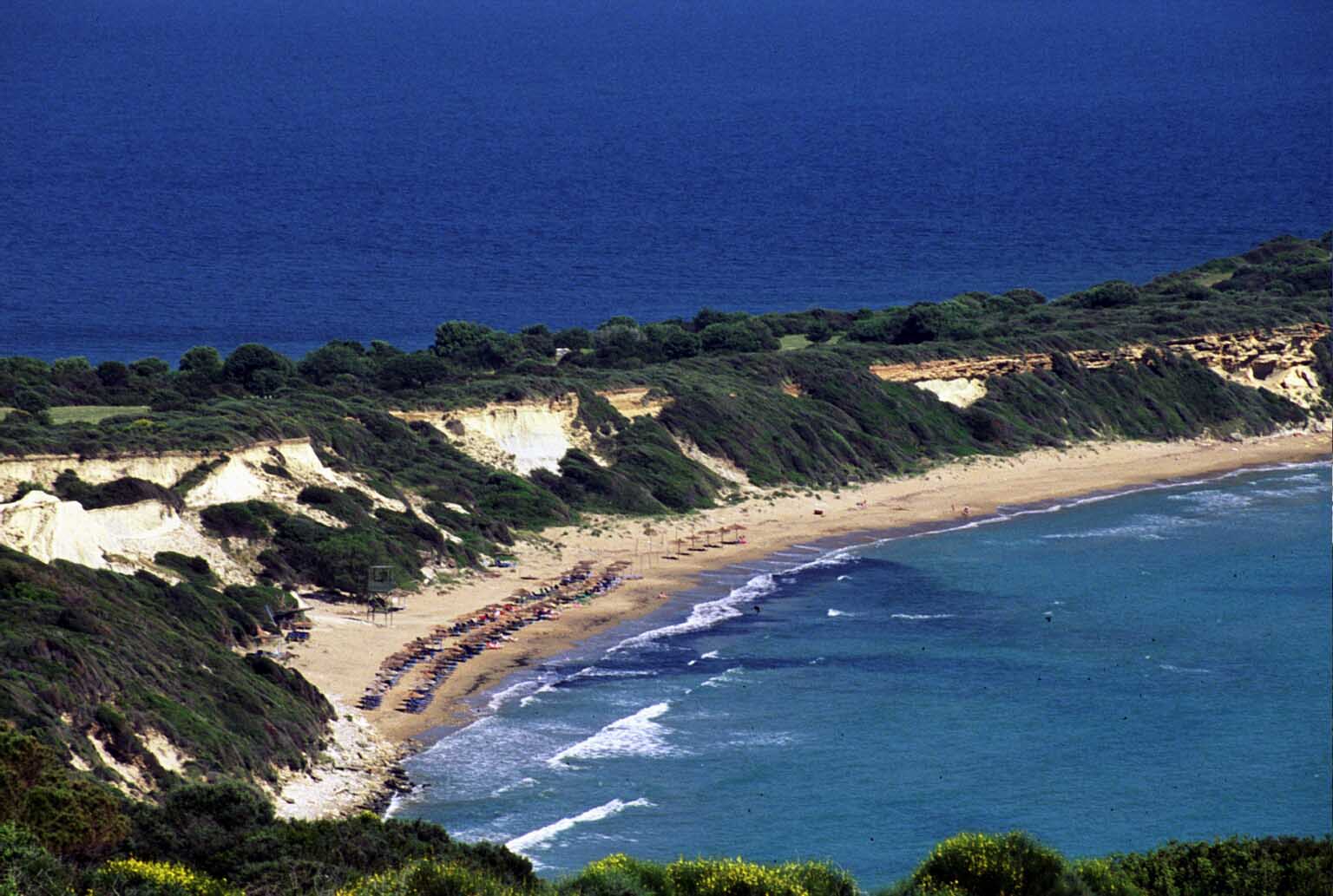
Gerakas beach
Laganas
Laganas is the most popular beach on the island as well as being the liveliest and busiest resort. The magnificent beach has over 5 kilometres of golden sand, which gently shelves into the clear water. This beach is also part of the National Marine Park.
Unlike Gerakas, some water sports are available at Laganas, and there are frequent boat trips taking tourists out to see the turtles, but water sports are kept to a minimum to avoid disturbing the turtles.
There are plenty of fun beach bars, a plethora of different restaurants and tavernas lining the beach and the shops are also within easy reach. Another advantage of Laganas is the fact that it is so flat – everything you need is a short and easy walk away, even if you’ve sampled one too many of the local beers.
You may also like to read
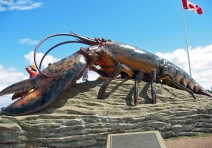
CANADA - LOBSTERS & LEVIATHANS
James Litston introduces Tour-smart followers to the edible delights and admirable scenery of Atlantic Canada's New Brunswick Province.
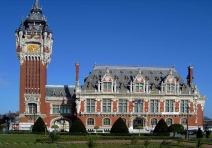
FRANCE - SUPER CALAIS FRAGALISTIC
Tour-smart's Editor Anna found plenty to do on a two day trip to the French Port of Calais.

Comments